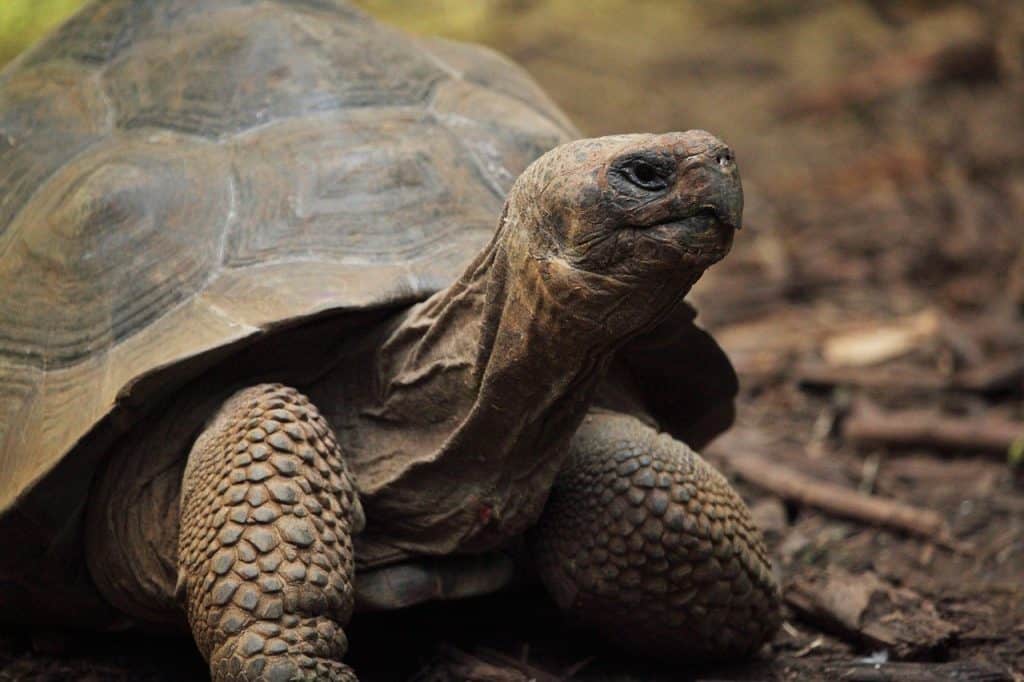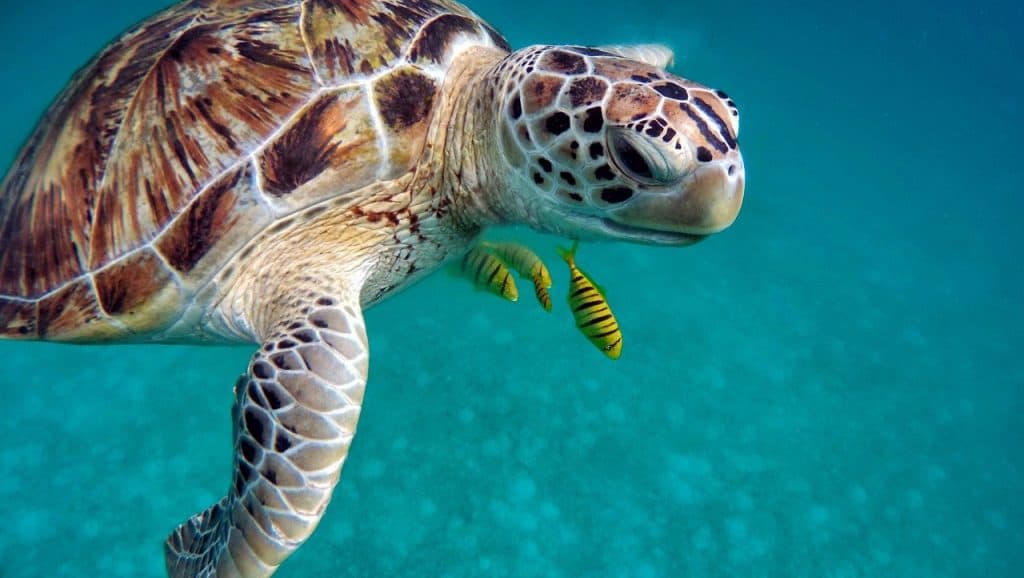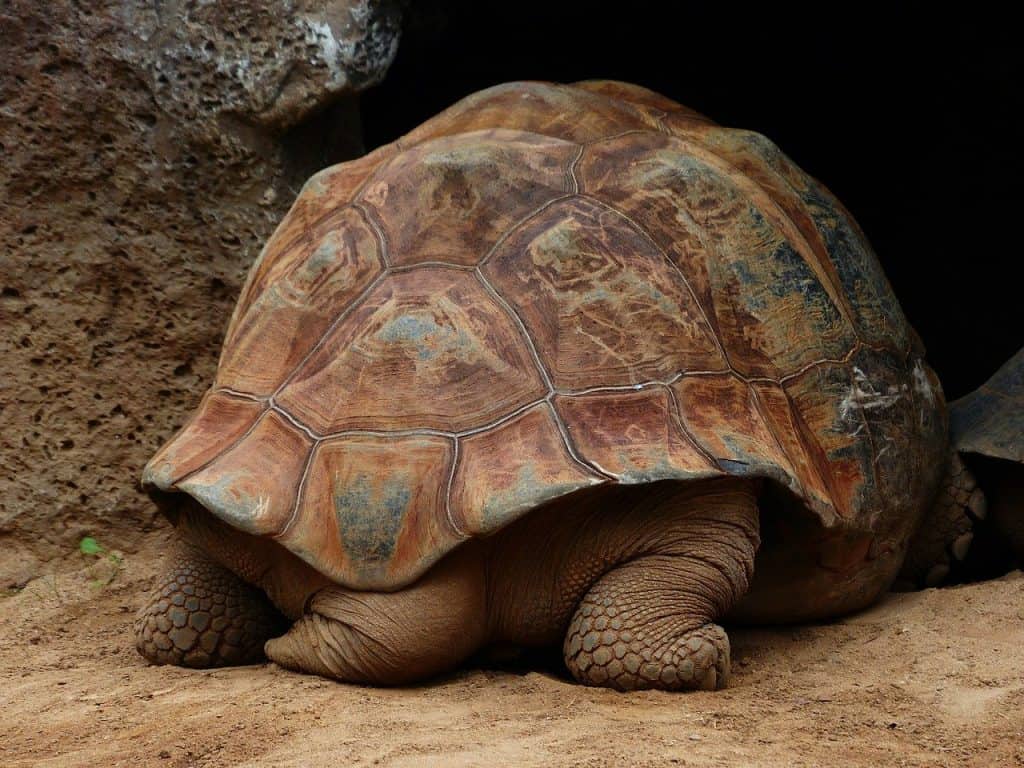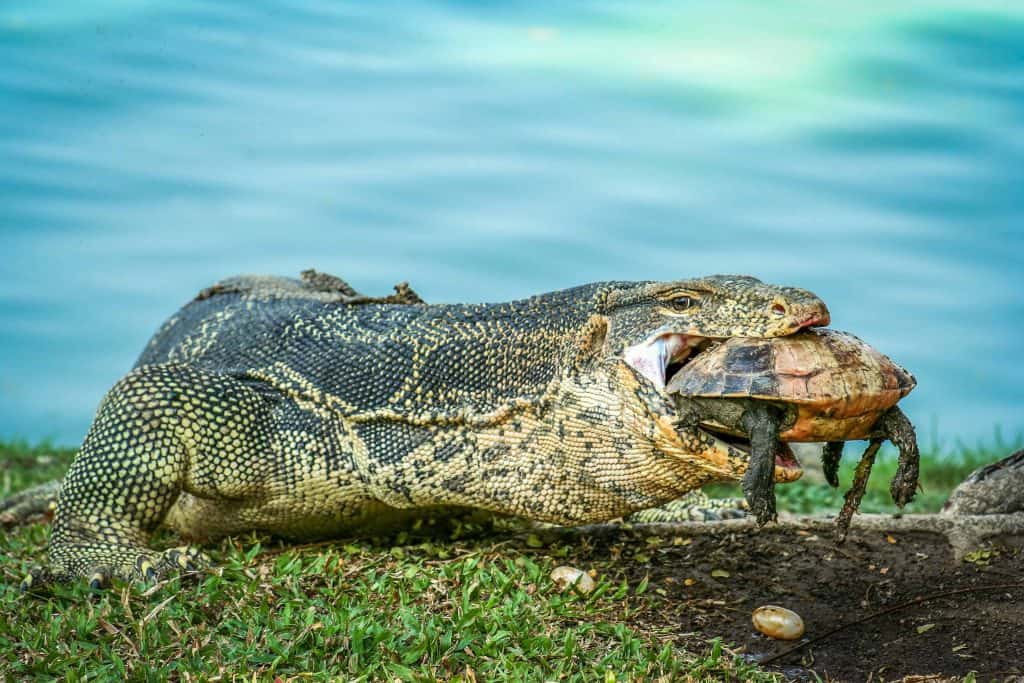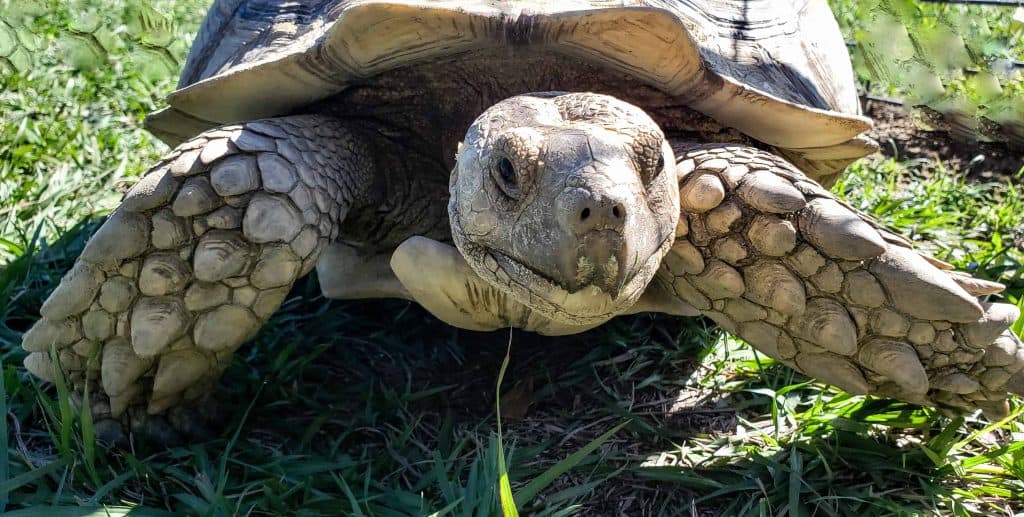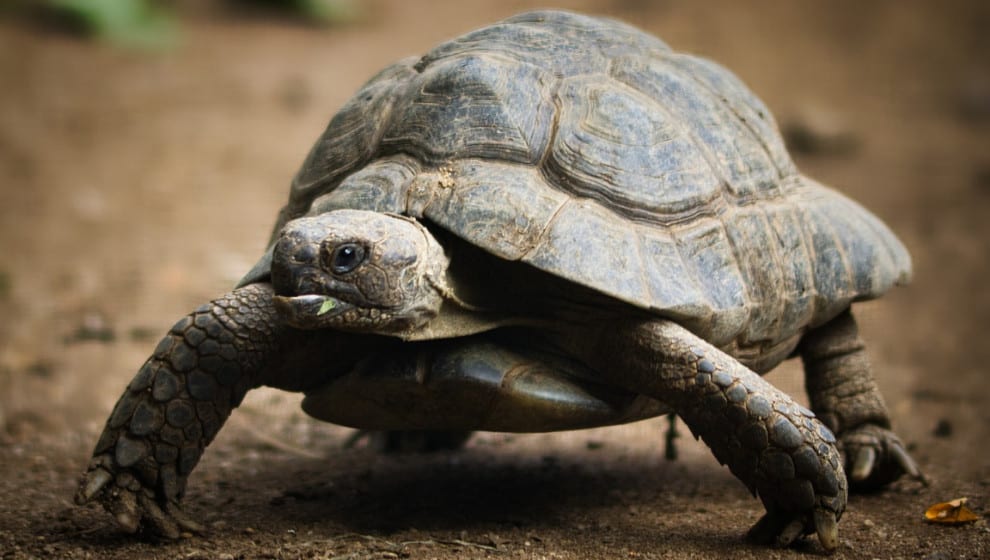Turtles are marketed as low-maintenance pets, but they need special care and a lot of room to grow in reality. You cannot keep them in the small dish with the plastic palm tree, as they will not survive, and you have to provide the right temperature, lighting, and water filtration system. Countless pet turtles die when being kept in an inadequate environment.
If you correctly maintain them, they will live for decades but, that is a lifetime responsibility, for which everyone is not prepared. They are not cuddly, but they are too cute and easy to care about if you have researched them well.
Table of Contents
How Long Can Your Turtle Stay Out Of Water?
Turtles spend most of their lives in the water eating and swimming, but they also need to come on the land and require dry, sunny places to raise their body temperatures.
Turtles spend about 40% of their lives out of water. If they get their hands on the well-shaded place with high humidity, then they can stay out of water for about a month and be okay. But on average, a turtle can be out of water for 6-8 hours without a problem.
As turtles are cold-blooded, they cannot regulate their body temperatures independently. The temperature of their outside environment determines the amount of heat their body needs. They vary their location from water to land and back again to keep themselves safe from getting too cold or too hot.
Turtles slip into the coolness of water if their body gets too hot, often around 105° F, and similarly, when they start to get too cold, then they head to a sunny land to bask themselves in the rays of sunlight. In this way, they bring back their body temperatures. They pass their lives in this endless cycle of land and water, trying to maintain a temperature balance in their shelled bodies.
What Factors Determine Period Of Turtles Out Of Water?
Turtles can spend a few hours up to a few months out of water. The following factors determine the exact time that turtles can spend out of water.
Age
An older turtle can remain out of water more than the younger ones because young turtles are not fully developed yet. Young turtles can do everything that elders can do, but they can’t do things on the same scale.
Turtles out of water will use stored energy and resources of their bodies to survive. So, young turtles are not able to hold as much energy and resources as their adults. This results in their not so extended stay on the land.
Temperature
The temperature factor is undeniable such that the hotter the land’s temperature, the shorter time of the turtle’s stay will be. Higher temperatures evaporate the water from the turtle’s body and water on the ground and affect the water inside the body.
Humidity
Humidity is the total amount of water in a particular area. If the site has more humidity, a turtle can spend more time on the land or out of the water.
As we know that water has 100% humidity, so if the moisture of any area is closer to 100%, that means turtles will be able to stay there for a longer time. 100% humidity does not mean to cover the area with water, but it means that the area gets enough rain. Being in the water and being in a rainy place is not the same, but rain will help turtles stay out.
Humidity is one of the most crucial factors of all the elements. High moisture will give the turtles a feel of being in the lake, so age and temperature will not affect much.
Hibernation
During the period of cold weather, turtles undergo hibernation. They reduce their metabolic rate in this state means that they use very little energy, do not eat or drink, and basically will be sleeping for the whole period.
Cold weather does not allow vegetation to grow. So, animals undergo hibernation during winters while being less active until things get back to normal.
Turtles can hibernate in many spaces, but they mostly choose to do it at the bottom of the lake. If they can’t do that, they will find a place out of the water then. They can hibernate in any hole on the ground, in a pile of leaves, or on a tree hollow on land.
Depending on the weather, turtles can spend hibernating anywhere for 2 to 5 months. During their hibernation period, they can stay out of the water without any problem.
Specie
How much time a turtle takes to stay out of the water also depends on the turtle species. The red-eared slider can survive for quite a long time than the other species.
HOW WILL A TURTLE SURVIVE OUT OF THE WATER?
Turtles on the land will either bask or migrate in search of a cool, moist place. As turtles can stay for a few hours or days in a hot, dry environment, if they succeed in finding a cool and humid place, they can survive for months, potentially depending on their species.
Why Do Pet Turtles Need To Bask?
To regulate their body temperature, your turtle needs to bask. If you are a reptile pet owner, you need to make sure to provide your turtle an excellent dry location with a heat lamp and UVB light. UVB light will provide a replacement for the sun rays but are not able to produce heat. So it would help if you give them a heat lamp separately.
It would help if you keep their basking temperature between 80-85 ° F. A nice temperature gradient inside their tank will keep your turtle’s internal body temperature balanced.
The basking area needs to be large enough so that your turtle can dry off themselves completely without hanging any body part in the water. If you are unable to provide this, your turtle then may show respiratory infections.
Why Do Turtles Spend Most Of Their Time In The Water?
This is because of the habitat of turtles, and they find their best chance of survival there. Turtles are slow on land than underwater; this means they can save themselves from predators better in the water than on land. They also have more access to food in the water. There are several small insects around the lakes and rivers that turtles can eat.
How Long Can A Turtle Stay Underwater?
It depends on the turtle. Sea turtles can stay in water for about 5-6 hours without breathing, aquatic turtles can remain for about 20-30 minutes, while land turtles cannot last more than 1 minute in the water.
How Long Can A Red-Eared Slider Live Without Water?
They are a very hardy aquatic turtle species. Red-eared sliders can survive in the hot and dry climate for one week, but they can go for more than a month on the land if the air is humid and also water puddles are available for them to drink.
These turtles love to Bask, but they also love the water more. If you have a red-eared slider, you need to provide a large tank and a basking area. It would be best to have a large aquarium in which 60-80 gallons of water can fit. Because the more the water slider has, the more they will feel like being at home.
How Long Can A Painted Turtle Stay Out Of Water?
A painted turtle will survive a few days without water, but they need to get in and out of water a few times a day. They need a basking time of 6-8 hours per day. If you keep painted turtles out of water for a longer time, they will not survive.
Can Box Turtles Live Outside The Water?
Box turtles are among the few terrestrial turtles who prefer to live on the land, so they live entirely on the ground. They are not strong swimmers, and also they do not have webbed feet. A box turtle can survive on land but can stay in water for very few minutes.
Can We Use Tap Water For Turtles?
Yes, you can use tap water in tanks and aquariums as it will not cause any health issues for your turtle. But you must make sure that your area’s water supply provide chlorine-free water. If the water is chlorinated or chloramine treated, there are chances of stinging your turtle’s eyes. So, you should de-chlorinate the water before use or try to use distilled water.
Conclusion
As a reptile owner, it is your responsibility to know the favorable temperature, habitat food, and many more things about your turtle. It would be the best to ask about each detail regarding your turtle from the reptile pet store.
It is wrong if we outline the exact time of turtle staying out of the water as many factors are involved in this time determination. As every turtle is different, so it all depends on that particular turtle.

